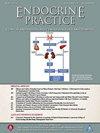1型糖尿病患者使用自动胰岛素输送系统的现实证据综述
IF 4.6
3区 医学
Q2 ENDOCRINOLOGY & METABOLISM
引用次数: 0
摘要
自动化胰岛素输送系统(AID)已经彻底改变了1型糖尿病(T1D)的管理。指南支持向所有T1D患者提供援助,并在选择可用的援助系统时参与共同决策。在临床试验中,AID已被证明可以改善血糖控制和降低低血糖,同时还可以提高生活质量。然而,临床试验的参与者并不能准确反映整个T1D人群,这些对照的结果可能无法推广到临床护理。越来越多的实际证据试图了解艾滋病系统对实际人群血糖和个人报告结果测量的影响。这些现实世界的研究强调了参与艾滋病的差异的影响,包括在自动化模式下的时间和每天的剂量,对艾滋病系统选择的考虑,以及对T1D患者的教育方法。在这篇综述中,我们比较了临床试验和现实世界研究中的血糖和个人报告结果,并根据用户特征考虑了不同系统的影响。我们还回顾了目前糖尿病患者、护理人员和临床医生在设备选择和教育方面的现状。最后,我们总结了AID系统的主要发现和进一步研究的机会。本文章由计算机程序翻译,如有差异,请以英文原文为准。
A Review of Real-World Evidence About the Use of Automated Insulin Delivery Systems in People With Type 1 Diabetes
Introduction
Automated insulin delivery systems (AID) have revolutionized type 1 diabetes (T1D) management. Guidelines support offering AID to all people with T1D and engaging in shared decision making when choosing among the available AID systems.
Results
In clinical trials, AID has been shown to improve glycemic control and reduce hypoglycemia while also improving quality of life. However, participants in clinical trials do not accurately reflect the entire T1D population and outcomes from these controlled may not generalize to clinical care. A growing body of real-world evidence seeks to understand the effect of AID systems on glycemia and person-reported outcome measures in real-world populations. These real-world studies highlight the effect of differences in engagement with AID, including time in automated mode and boluses per day, considerations about AID system selection, and approaches to educate people with T1D.
Conclusion
In this review, we compare glycemic and person reported outcomes in clinical trials and the real-world studies, with consideration of the effects of different systems according to user characteristics. We also review the current state of device selection and education for people with diabetes, their caregivers, and clinicians. Lastly, we summarize key findings across AID systems and opportunities for further research.
求助全文
通过发布文献求助,成功后即可免费获取论文全文。
去求助
来源期刊

Endocrine Practice
ENDOCRINOLOGY & METABOLISM-
CiteScore
7.60
自引率
2.40%
发文量
546
审稿时长
41 days
期刊介绍:
Endocrine Practice (ISSN: 1530-891X), a peer-reviewed journal published twelve times a year, is the official journal of the American Association of Clinical Endocrinologists (AACE). The primary mission of Endocrine Practice is to enhance the health care of patients with endocrine diseases through continuing education of practicing endocrinologists.
 求助内容:
求助内容: 应助结果提醒方式:
应助结果提醒方式:


